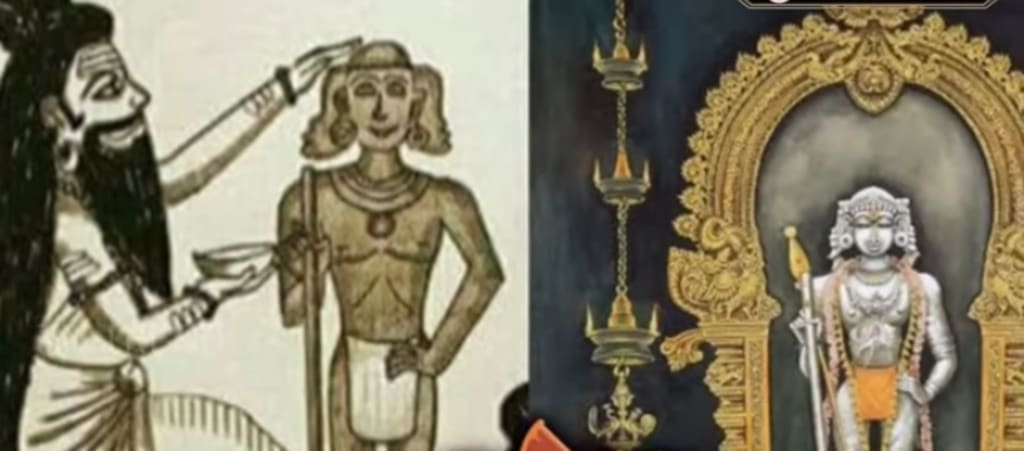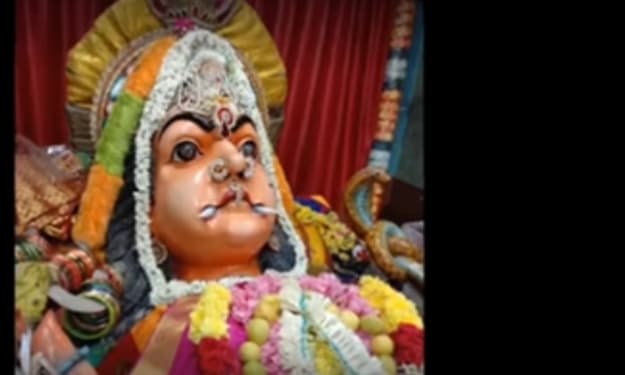Pazhani murugan history
Pazhani Murugan, also known as Palani Murugan, is a deified deity in the Hindu pantheon, specifically in the Tamil Nadu region of South India. He's one of the six residences( Arupadai Veedu) of Lord Murugan, also known as Kartikeya or Subramanya, who's extensively worshipped as the god of war and palm. The history of Palani Murugan is deeply intertwined with tradition, religious practices, and the artistic heritage of Tamil Nadu.

Pazhani Murugan, also known as Palani Murugan, is a deified deity in the Hindu pantheon, specifically in the Tamil Nadu region of South India. He's one of the six residences( Arupadai Veedu) of Lord Murugan, also known as Kartikeya or Subramanya, who's extensively worshipped as the god of war and palm. The history of Palani Murugan is deeply intertwined with tradition, religious practices, and the artistic heritage of Tamil Nadu.
Mythological Background The origins of Palani Murugan are embedded in Hindu tradition, particularly the stories girding Lord Murugan. According to legend, Lord Murugan was born to Lord Shiva and Parvati. He was created to lead the godly forces against the asura( demon) Surapadman. The story of his birth is fascinating and involves several miraculous events, including the metamorphosis of six sparks of fire emitted by Lord Shiva into six babies, which were latterly united into a single child by Goddess Parvati.
One of the most popular myths associated with Palani Murugan is the story of the godly fruit. According to this legend, Sage Narada formerly visited Mount Kailash and presented a godly fruit to Lord Shiva and Parvati. The fruit was said to bestow knowledge and wisdom. Lord Shiva decided to test his sons, Ganesha and Murugan, to determine who was good of entering the fruit. He set a challenge for them whoever circled the world three times and returned first would win the fruit. Murugan, confident in his quickness, incontinently set out on his peacock.
still, Ganesha, known for his wisdom, simply circled his parents three times, stating that they represented the macrocosm. Pleased with Ganesha's wisdom, Shiva awarded him the fruit. When Murugan returned and learned of this, he felt lowered and left for Palani, where he renounced his worldly effects and took up a life of austerity.
This event is commemorated by the notorious Palani Temple. literal and Artistic Significance The Palani Temple, positioned in the city of Palani in Dindigul quarter, is a major passage point. It's perched atop a hill known as Sivagiri, and the tabernacle's origins are ancient, dating back to the early centuries of the Common period. The tabernacle armature and iconography reflect the Dravidian style, with intricate busts, towering gopurams( gateway halls), and a significant use of determinedness.
literal records suggest that the tabernacle has been patronized by colorful South Indian dynasties, including the Pandyas, Cholas, and latterly the Nayaks of Madurai. The foremost references to the tabernacle can be traced back to the Sangam literature, which highlights the elevation of Lord Murugan in the Tamil spiritual tradition.
Religious Practices and Carnivals Palani Murugan is worshipped with great vehemence, and several rituals and carnivals mark the religious timetable. One of the most significant carnivals is Thaipusam, which generally falls in January or February. During Thaipusam, addicts take over a passage to the tabernacle, frequently carrying kavadis( ornamental structures carried on the shoulders) as a form of penance and devotion.
The kavadi tradition is particularly striking, with addicts piercing their bodies with hooks and skewers in a display of faith and abidance. Another important jubilee is Panguni Uthiram, celebrated in March or April, which marks the elysian marriage of Murugan and his consorts, Valli and Deivayanai. The jubilee is characterized by grand processions, elaborate rituals, and a swell of pilgrims who gather to substantiation the godly event.
diurnal rituals at the Palani Temple include multiple poojas( deification observances) conducted at specific times, starting from early morning till night. These rituals involve the chanting of Vedic hymns, immolations of fruits and flowers, and the lighting of lights. The abhishekam( ritual bathing) of the deity with colorful substances like milk, honey, and sandalwood paste is a significant aspect of the deification, emblematizing sanctification and sanctification.
Spiritual and Artistic Impact Palani Murugan's influence extends beyond religious practices into the artistic fabric of Tamil Nadu. The deity is a central figure in Tamil literature, music, and trades. multitudinous hymns, known as Tirupugazh, composed by the saint- minstrel Arunagirinathar, glorify the merits of Murugan and are sung with great devotion. These hymns aren't only a testament to the religious significance of Murugan but also a reflection of the rich erudite tradition of Tamil Nadu.
The Palani Temple itself is a mecca of artistic conditioning. It serves as a venue for classical music and cotillion performances, particularly during jubilee times. The tabernacle's administration also engages in colorful social and charitable conditioning, including the provision of free refections to pilgrims and the conservation of educational institutions. In contemporary times, Palani Murugan continues to be a source of spiritual solace and artistic identity for millions of addicts. The tabernacle attracts callers from across India and the world, who come seeking blessings, fulfillment of promises, and spiritual enlightenment.
The enduring heritage of Palani Murugan, reprised in tradition, history, and vibrant artistic practices, underscores his dateless appeal and the profound impact on the addicts' lives.
Conclusion The history of Palani Murugan is a rich shade woven from mythological tales, literal developments, and artistic expressions. From the fabulous story of the godly fruit to the architectural splendor of the Palani Temple, and from the hot religious practices to the profound spiritual influence, Palani Murugan stands as a lamp of faith and devotion in Tamil Nadu. His continuing presence continues to inspire and unite addicts, offering a regard into the deep spiritual heritage and vibrant artistic life of the region.
About the Creator
Enjoyed the story? Support the Creator.
Subscribe for free to receive all their stories in your feed. You could also pledge your support or give them a one-off tip, letting them know you appreciate their work.





Comments
There are no comments for this story
Be the first to respond and start the conversation.